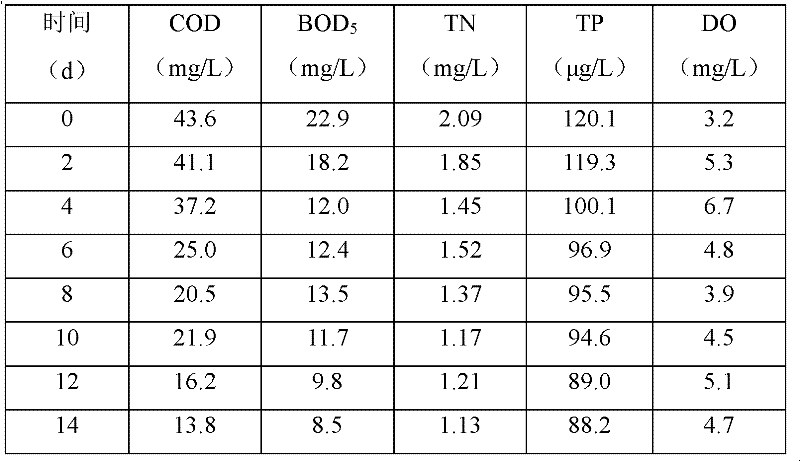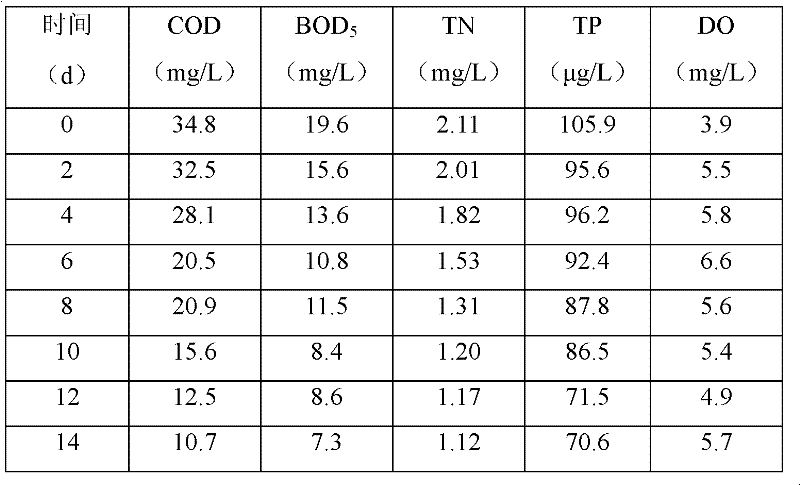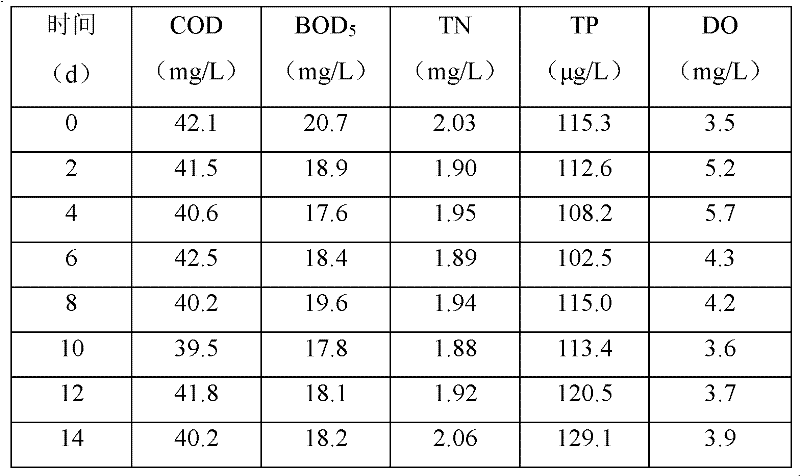Method for purifying mariculture wastewater by utilizing compound microbial inoculant
A compound microbial agent and mariculture technology, applied in biological water/sewage treatment, chemical instruments and methods, water/sludge/sewage treatment, etc., can solve the problem of ineffective removal of phosphorus and other pollutants and single treatment bacteria , Incomplete and other problems, to achieve the effect of economic feasibility, improvement of breeding quality and obvious effect
- Summary
- Abstract
- Description
- Claims
- Application Information
AI Technical Summary
Problems solved by technology
Method used
Image
Examples
Embodiment 1
[0016] In this example, Rhodopseudomonas palustris of CCTCC M 205147, Arthrobacter of ACCC 10691, Alcaligenes denitrificans of ACCC 03247, Lactobacillus acidophilus of ACCC 10637, and Utilization of CGMCC 2.1016 were used in this example. Candida and Bacillus subtilis of CGMCC 1.1630 are domesticated for salt tolerance and temperature tolerance, and are used as production bacteria to form a composite microbial agent. Among them, the total number of microorganisms in the compound microbial agent is ≥1.0×10 10 CFU / g, and photosynthetic bacteria ≥5.0×10 8 CFU / g, nitrifying bacteria≥2.0×10 8 CFU / g, denitrifying bacteria ≥3.0×10 8 CFU / g, acidophilus ≥1.0×10 9 CFU / g, Candida utilis ≥5.0×10 8 CFU / g, Bacillus ≥7.5×10 9 CFU / g.
[0017] The steps of salt-tolerant breeding of strains are as follows. The selected strains are cultivated in the gradient medium containing 0.3%-2% sodium chloride to gradually improve the salt tolerance of the strains. After several generations of salt...
Embodiment 2
[0022] In this example, Rhodopseudomonas palustris of CCTCC M 205147, Arthrobacter of ACCC 10691, Alcaligenes denitrificans of ACCC 03247, Lactobacillus acidophilus of ACCC 10637, and Utilization of CGMCC 2.1016 were used in this example. Candida and Bacillus subtilis of CGMCC 1.1630 are subjected to salt-tolerant and temperature-resistant acclimatization (conditions are the same as in Example 1), and are used as production bacteria to form a composite microbial bacterial agent. Among them, the total number of microorganisms in the compound microbial agent is ≥1.0×10 10 CFU / g, and photosynthetic bacteria ≥5.0×10 8 CFU / g, nitrifying bacteria≥2.0×10 8 CFU / g, denitrifying bacteria ≥3.0×10 8 CFU / g, acidophilus ≥1.0×10 9 CFU / g, Candida utilis ≥5.0×10 8 CFU / g, Bacillus ≥7.5×10 9 CFU / g.
[0023] Medium activation is used, and the medium components are: peptone 3g / L, yeast powder 3g / L, glucose 5g / L, sodium chloride 10g / L, potassium dihydrogen phosphate 0.5g / L, magnesium sulfate ...
PUM
 Login to View More
Login to View More Abstract
Description
Claims
Application Information
 Login to View More
Login to View More - R&D
- Intellectual Property
- Life Sciences
- Materials
- Tech Scout
- Unparalleled Data Quality
- Higher Quality Content
- 60% Fewer Hallucinations
Browse by: Latest US Patents, China's latest patents, Technical Efficacy Thesaurus, Application Domain, Technology Topic, Popular Technical Reports.
© 2025 PatSnap. All rights reserved.Legal|Privacy policy|Modern Slavery Act Transparency Statement|Sitemap|About US| Contact US: help@patsnap.com



